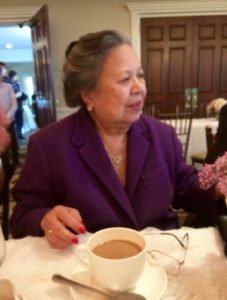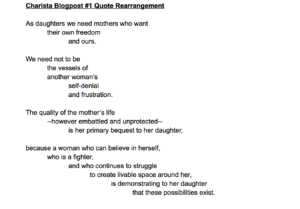As I was reading Shange’s Sassafrass, Cypress, and Indigo, I noticed that a powerful underlying theme of this piece is the significance of cultural tradition in the lives of contemporary black people, especially during the 1970s when this piece was written. In the piece, Shange makes it evident that the portrayal and depiction of cultural heritage strongly affects the identity and character development of Sassafras, Cypress, and Indigo, partly because of their mother’s influence.
The mother, Hilda, was a weaver, who instilled values in her daughters to absorb the creativity and discipline of a life in craft which then results in their pursuit of their own individualized arts and passions. While all three daughters were creative– with Indigo cooking and Cypress dancing–Sassafrass is the one who continues her family’s traditional occupation of weaving. I want to focus on Sassafrass in this blog post because to me, she represented cultural tradition.
Even though Sassafrass viewed weaving was an art form, rather than an occupation like her mother, she recognizes that she has a place in a line of weavers and then associates this skill with female identity on the widespread cultural scale. This is evident when Shange writes: “Sassafras was certain of the necessity of her skill for the well-being of women everywhere, as well as for her own. As she passed the shuttle through the claret cotton warp, Sassafrass conjured images of women weaving from all time and all places….”
This quote from Sassafrass, Cypress, and Indigo displays this theme of the importance of culture and tradition that doesn’t seem to escape Sassafrass’ mind. This quote almost makes it seem as if Sassafrass is realizing her calling to this art form/occupation that holds such a great deal of significance to her mother by acknowledging the importance of weavers and other female weavers everywhere.




